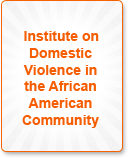Domestic violence is a pattern of abusive behavior in any relationship that is used by one partner to gain or maintain power and control over another intimate partner. Domestic violence can be physical, sexual, emotional, economic, or psychological actions or threats of actions that influence another person. This includes any behaviors that intimidate, manipulate, humiliate, isolate, frighten, terrorize, coerce, threaten, blame, hurt, injure, or wound someone.
Physical Abuse: Hitting, slapping, shoving, grabbing, pinching, biting, hair pulling, etc are types of physical abuse. This type of abuse also includes denying a partner medical care or forcing alcohol and/or drug use upon him or her.
Sexual Abuse: Coercing or attempting to coerce any sexual contact or behavior without consent. Sexual abuse includes, but is certainly not limited to, marital rape, attacks on sexual parts of the body, forcing sex after physical violence has occurred, or treating one in a sexually demeaning manner.
Emotional Abuse: Undermining an individual's sense of self-worth and/or self-esteem is abusive. This may include, but is not limited to constant criticism, diminishing one's abilities, name-calling, or damaging one's relationship with his or her children.
Economic Abuse: Is defined as making or attempting to make an individual financially dependent by maintaining total control over financial resources, withholding one's access to money, or forbidding one's attendance at school or employment.
Psychological Abuse: Elements of psychological abuse include - but are not limited to - causing fear by intimidation; threatening physical harm to self, partner, children, or partner's family or friends; destruction of pets and property; and forcing isolation from family, friends, or school and/or work.
Domestic violence can happen to anyone regardless of race, age, sexual orientation, religion, or gender. Domestic violence affects people of all socioeconomic backgrounds and education levels. Domestic violence occurs in both opposite-sex and same-sex relationships and can happen to intimate partners who are married, living together, or dating.
Domestic violence not only affects those who are abused, but also has a substantial effect on family members, friends, co-workers, other witnesses, and the community at large. Children, who grow up witnessing domestic violence, are among those seriously affected by this crime. Frequent exposure to violence in the home not only predisposes children to numerous social and physical problems, but also teaches them that violence is a normal way of life - therefore, increasing their risk of becoming society's next generation of victims and abusers.
Sources: Office on Violence Against Women, National Domestic Violence Hotline, National Center for Victims of Crime, andWomensLaw.org.
Visitation is when one parent has dedicated time with their child. In some states it is called parenting time. Supervised visitation is a generic term that describes parent/child contact overseen by a third party. In the context of this tool, supervised visitation occurs in a safe space under the control of a visitation program when there is concern for the safety of the child and/or for a parent who has been abused by the other parent. It can be done in several ways but at most places there is a monitor that watches over the visit. Sources: Supervised Visitation Network and Futures Without Violence.
Some visitation programs also provide a service where parents can safely drop off and pick or "exchange" their children under the observation of a third party. Parents do not interact with each other and children are transferred or exchanged through a third party. In this situation, parents are taking their children off the center premises to spend time with their children in an unsupervised setting which can last hours or days depending upon the arrangement. Children do not visit parents at the center but instead from spending time with the other parent (in an unsupervised setting). Sources: Supervised Visitation Network and Futures Without Violence.
Guiding Principles Training Tool
Welcome
Director's Message
Introduction
The U.S. Department of Justice, Office on Violence Against Women (OVW) is excited to present this online learning tool dedicated to the Guiding Principles for the Safe Havens: Supervised Visitation and Safe Exchange Grant Program (Supervised Visitation Program). The Guiding Principles were developed over the course of a three period, with significant input from a National Steering Committee, supervised visitation and exchange centers (centers), grantee communities, and technical assistance providers. While the Guiding Principles serve as the philosophical underpinnings of the Supervised Visitation Program, they collectively provide a roadmap to any community thinking about creating or enhancing supervised visitation and exchange services for families experiencing domestic violence, sexual assault, dating violence, child abuse or stalking.
There are six Guiding Principles. Each principle outlines a key concept and provides further direction through standards and practices. They should be read and implemented in their totality, as the concepts are intertwined and build off each other. Knowing that there is limited information available about the Guiding Principles outside of the grant program, this forum was created to help professionals and communities learn about their intent. By using this tool, individuals and communities will better understand:
- The historical framework for the need and development of the Supervised Visitation Program and its Guiding Principles.
- How the Guiding Principles have been implemented by communities on both policy and practice levels; and
- The importance of using the Guiding Principles when providing supervised visitation and exchange services to families where domestic violence, sexual assault. stalking or child abuse has been an issue.
This online tool was produced in partnership by OVW and the Institute on Domestic Violence in the African American Community (IDVAAC). The content is pertinent for courts, domestic violence service providers, units of government, community-based agencies, supervised visitation and exchange providers, and other allied professionals that seek to support the work of centers and build a comprehensive response to adult victims of domestic violence and their children. An enormous number of individuals were involved in creating this tool. IDVAAC and OVW are grateful to everyone for sharing their time, talent, and experiences and their ongoing commitment to keeping victims of domestic violence and children safe.
How to Use the Tool
This tool was designed for easy navigation. There is an "Overview" section which contains information about post separation in the context of supervised visitation and exchange services and background on the development of the Supervised Visitation Program and the Guiding Principles. Each principle has its own section with several supporting components. In the dropdown menu under every principle, the learner will find a main video that provides background and context for the principle. There are also tabs that contain other pieces to help the learner explore the principle in more depth, such as scenarios, and a short quiz that emphasizes the key points of the principle.
The hope is that individuals or multidisciplinary groups will go through each segment at a pace that works best for them. While it is recommended that viewers go through the tool in sequence, it is not necessary to do so. The tool also has many downloadable features for communities and centers to use to spark conversations and analysis of their own services and responses to families experiencing domestic violence.
While using this tool, learners may see acronyms they are not familiar with. The following flash cards can be helpful in learning what the acronyms stand for.
To learn more about the individuals appearing throughout the videos in this tool, click here.
Acronym Flash Cards


















Match the Guiding Principle
Drag right items to the left side.
Equal Regards for Safety of Children and Adult Victims
Valuing Multiculturalism and Diversity
Incorporating and Understanding of Domestic Violence into Center Services
Respectful and Fair
Interaction
Community
Collaboration
Advocacy for Children
and Adult Victims
Visitation centers should be responsive to the background, circumstances, and cultures of their community and the families they serve.
Visitation centers should threat every individual using their services with respect and fairness, while taking into account the abuse that has occured within the family.
Visitation centers should work with the community collaborative to ensure that child(ren) and adult victims have meaningful access to services and should actively link individuals to those services.
Visitation centers should seek to operate within a community collaborative which has as its goal to centralize safety of child(ren) and adult victims and hold batterers accountable.
Visitation centers should demonstrate a comprehensive understanding of the nature, dynamics, and impact of domestic violence and incorporate that understandind into their services.
Visitation centers should consider as their highest priority the safety of child(ren) and adult victims and should treat both with equal regard.
Test Your Knowledge
This is a short quiz to help you determine what you know about the Guiding Principles. You can take the same quiz after you have spent time on the online tool to help gauge how much you have learned.
8% 1Test Your Knowledge
15% 2Test Your Knowledge
23% 3Test Your Knowledge
31% 4Test Your Knowledge
38% 5Test Your Knowledge
46% 6Test Your Knowledge
54% 7Test Your Knowledge
62% 8Test Your Knowledge
69% 9Test Your Knowledge
77% 10Test Your Knowledge
85% 11Test Your Knowledge
92% 12Test Your Knowledge
This is a short quiz to help you determine what you know about the Guiding Principles. You can take the same quiz after you have spent time on the online tool to help gauge how much you have learned.
Thanks!
0 Correct
0 Incorrect




